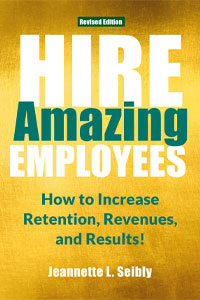
I returned from an inspiring weekend and was feeling good. I woke up smiling on Monday morning, ready to take on life. Then, I sniffed. Whew! I let go of my ego and laughed. “This is what pursuing my goals looks like … it includes details like cleaning out the cat litter box!” LOL!
When leaders, entrepreneurs, and business owners are busy pursuing their goals, they often ignore details and get overwhelmed when life and business aren’t working. Or their ego gets in the way. They forget or become irritable when the dishwasher needs to be loaded/unloaded. The dog requires walking. And the kids and significant others demand quality time. Sound familiar?
Workability occurs when you acknowledge the necessary details in your life and focus on getting them done in a way that honors others and your goals. (NOTE: If there’s a conflict between your goals and your life, reach out to your coach!)
Take the time this holiday season to reflect on and organize what needs to be done. Share your goals with your family and employees, and listen for the details you’ve overlooked. Delegate, and understand that others will not do things the same way you do! Remember, there are over 100 ways to wash dishes!
Tips to Handle the Details to Create Workability
- Honor Financial Obligations. Years ago, I met a self-proclaimed enlightened business owner that claimed he had a million-dollar business. But he kept his financials in a shoebox to avoid his ex-wife knowing how much his company was worth. First, I questioned his million-dollar claim because of other factors. Second, hiding the details and hoping no one will discover them will come back to haunt you. Schedule time weekly to keep your A/R, A/P, and taxes up-to-date and paid. Remember, the IRS doesn’t care about your excuses.
- Hire a Pro. Don’t try to do what you don’t do well. Hire a professional bookkeeper. Hire a cleaning person or caregiver. Hire a qualified engineer that fits the job. When hiring, use legally qualified tools and systems to ensure compliance with local, state, and federal laws.
- Trust Others to Get the Work Done. Complaining about how others do their work only causes an exodus of top talent at home and in business! Remember, these are the people who are handling the details! #1 – Stop micromanaging since you’ve not done the work and don’t know the details involved. #2 – Hire for job fit to ensure they are interested and willing to do the work as it needs to be done.
- Focus on Integrity. Cutting corners, overlooking quality concerns, not proofing docs, and ignoring safety precautions will get you in trouble. It doesn’t matter what your excuses are. You need to make the time and pay attention to the details or suffer the consequences. This includes reading the fine print! This is where a professional (aka an attorney) is essential.
- Hire a Coach. I know, I say this often! “Every successful leader has a coach!” The right coach guides you to handle the details, no matter how you feel about them. The coach helps you organize your goals and live a healthy lifestyle simultaneously.
- Express Gratitude. Have an appreciation for what you do have and express it instead of focusing on what you don’t have. It makes you an easier leader and person to work and live with! Your family and employees will appreciate this more than you imagine … along with your cat and dog!
- Stay Connected. Schedule 1:1 and group time with the people in your life. Put away electronics, and don’t allow other distractions to get in the way. Remember, there will always be high and low points in life. Your relationships will help you through both if you prioritize the time now.
©Jeannette Seibly 2022 All Rights Reserved
 Jeannette Seibly is The Leadership Results Coach. She’s celebrating 30 years as an award-winning international executive consultant, speaker, and coach. Her clients value the listening and positive difference she brings to any conversation. Feel stuck in a sticky situation or in challenging relationships? Want straightforward counsel to blast through it? Contact Jeannette for a confidential discussion. PS: She’s also a three-time Amazon Best-Selling Author!
Jeannette Seibly is The Leadership Results Coach. She’s celebrating 30 years as an award-winning international executive consultant, speaker, and coach. Her clients value the listening and positive difference she brings to any conversation. Feel stuck in a sticky situation or in challenging relationships? Want straightforward counsel to blast through it? Contact Jeannette for a confidential discussion. PS: She’s also a three-time Amazon Best-Selling Author!
A note from Jeannette about focusing on workability: When we are busy pursuing our goals, we forget or ignore the details that need our attention. The dishwasher still needs loading and unloading. The dog cannot walk itself. We put off spending quality time with family. Take the time during this holiday season to create workability in your life by addressing the details. Are your goals and life in conflict? Do you need to talk it out? Contact me for a confidential conversation.
Your blind spots get in the way of attracting and retaining top talent. When you ignore hiring and retention issues, achieving the intended results takes time, money, and energy. Instead of becoming a hamster on a wheel, address the real problems now! It’ll save you customers and give you a healthy bottom line. Click here for details.



 Jeannette Seibly is The Leadership Results Coach. She’s celebrating 30 years as an award-winning international executive consultant, speaker, and coach. Her clients value the listening and positive difference she brings to any conversation. Feel stuck in a sticky situation or in challenging relationships? Want straightforward counsel to blast through it? Contact Jeannette for a confidential discussion. PS: She’s also a two-time Amazon International Best-Selling Author!
Jeannette Seibly is The Leadership Results Coach. She’s celebrating 30 years as an award-winning international executive consultant, speaker, and coach. Her clients value the listening and positive difference she brings to any conversation. Feel stuck in a sticky situation or in challenging relationships? Want straightforward counsel to blast through it? Contact Jeannette for a confidential discussion. PS: She’s also a two-time Amazon International Best-Selling Author!
 Leaders need to stretch themselves beyond their perceived limitations for professional growth. It starts with distinguishing your blind spots:
Leaders need to stretch themselves beyond their perceived limitations for professional growth. It starts with distinguishing your blind spots: 
 Are you asking good, job-related interview questions? When hiring new employees or rehiring former ones, ask about their ability to handle mistakes. Why? 90% of new hires fail because they dismiss coaching or advice about how to improve. Get your copy of the newly released,
Are you asking good, job-related interview questions? When hiring new employees or rehiring former ones, ask about their ability to handle mistakes. Why? 90% of new hires fail because they dismiss coaching or advice about how to improve. Get your copy of the newly released, 
 When employees “quietly quit,” it is often due to you quickly hiring on instinct and then slowly firing for poor job skills. It’s time to develop a strategic selection system to improve how and whom you hire! Get your copy of the newly released,
When employees “quietly quit,” it is often due to you quickly hiring on instinct and then slowly firing for poor job skills. It’s time to develop a strategic selection system to improve how and whom you hire! Get your copy of the newly released, 
 Why are employees “quietly quitting?” One of the critical issues is poor job fit for employees! And poor job fit for their bosses who got promoted without the skills to be leaders. It’s time to develop a strategic selection system to improve your hiring results! Get your copy of the newly released,
Why are employees “quietly quitting?” One of the critical issues is poor job fit for employees! And poor job fit for their bosses who got promoted without the skills to be leaders. It’s time to develop a strategic selection system to improve your hiring results! Get your copy of the newly released, 
